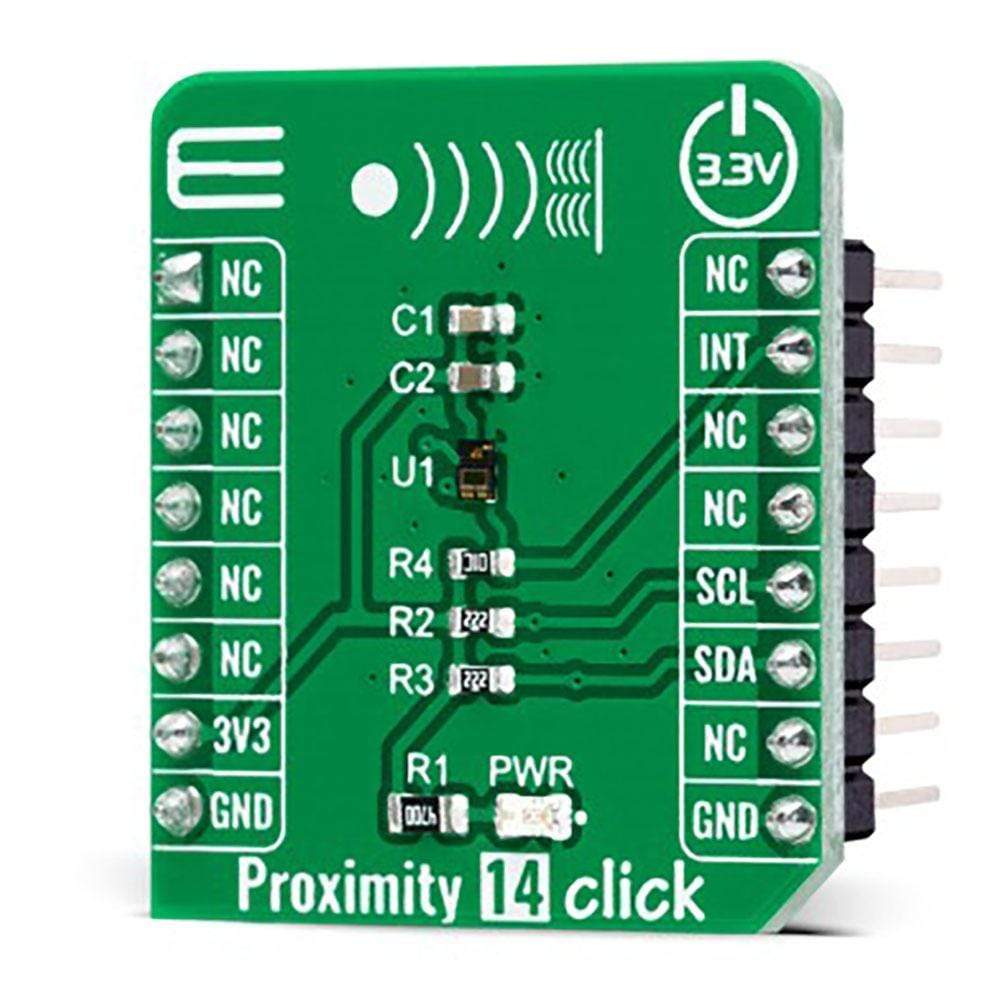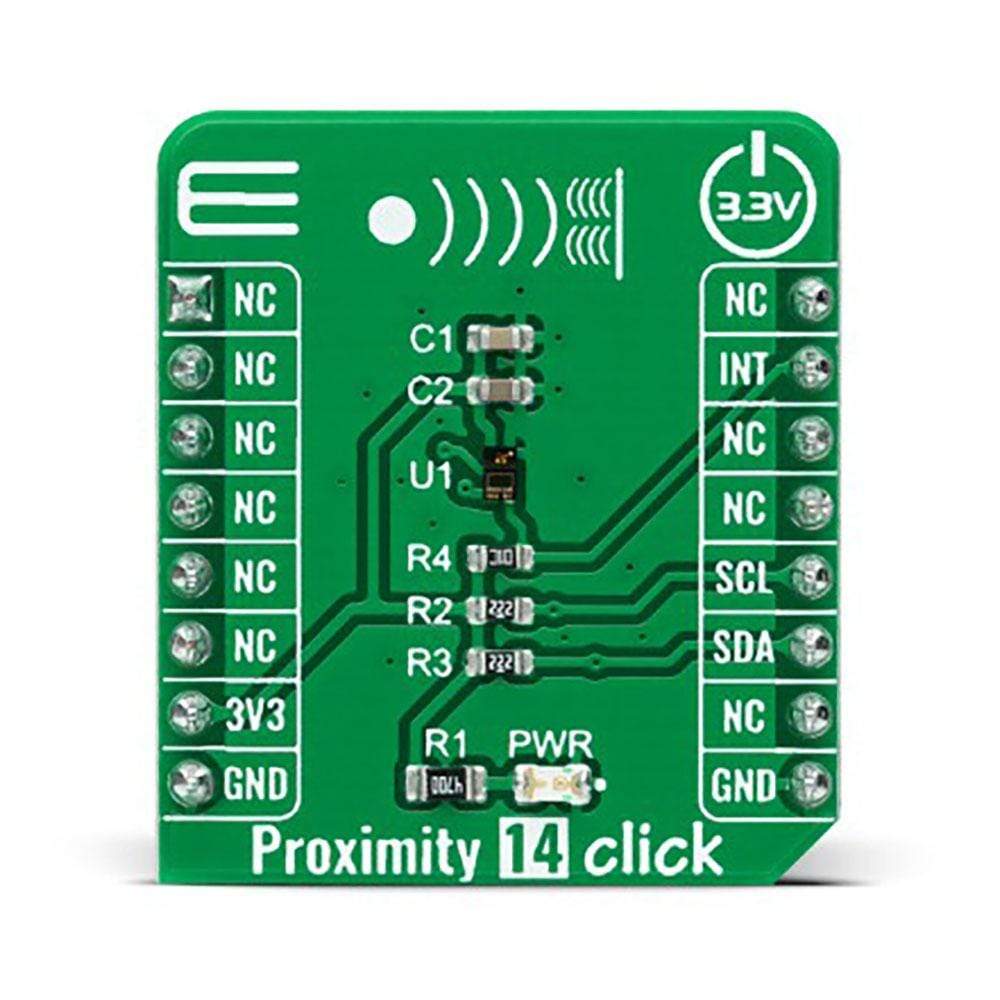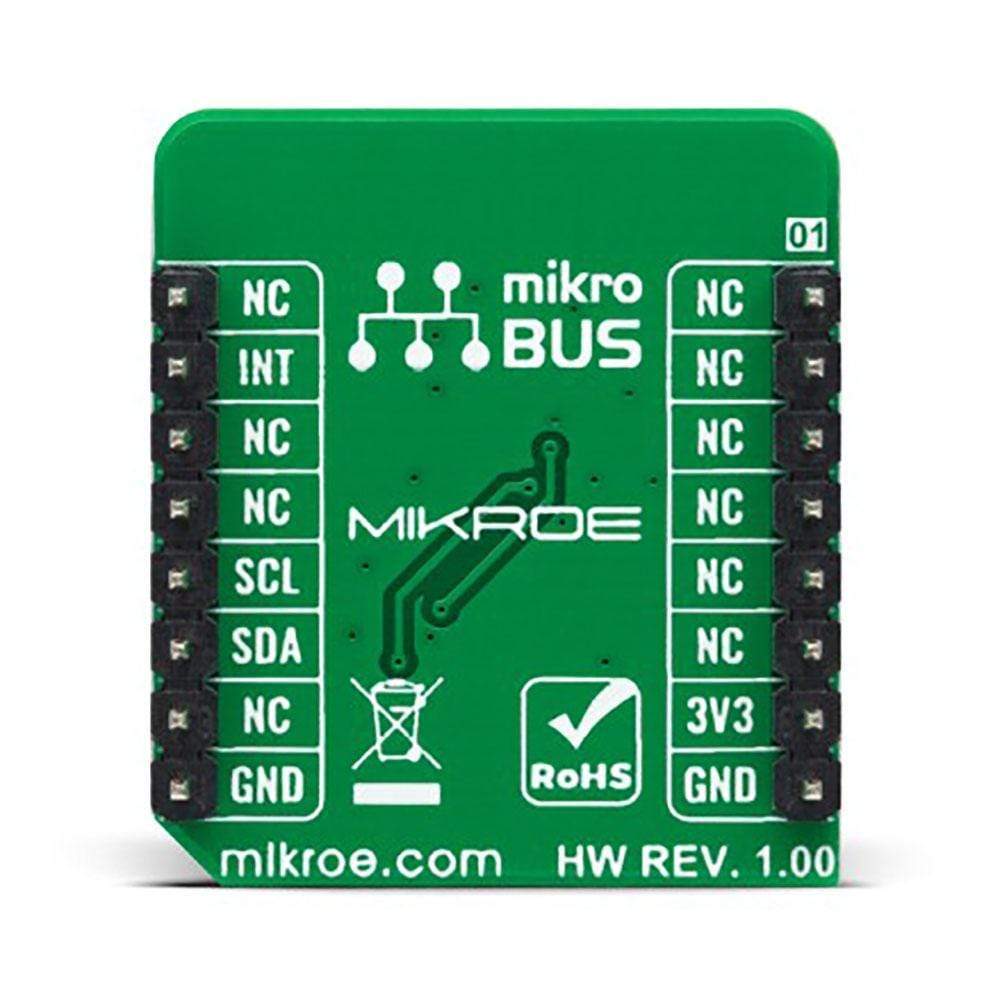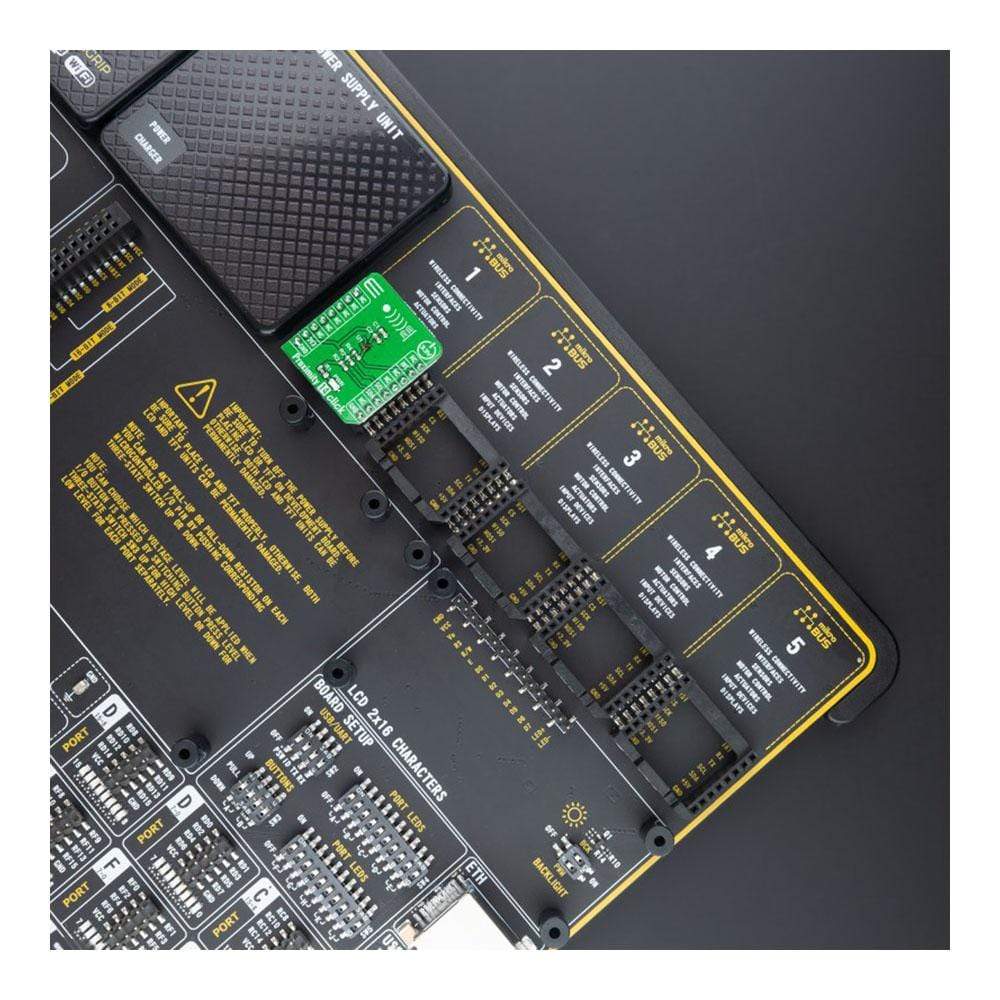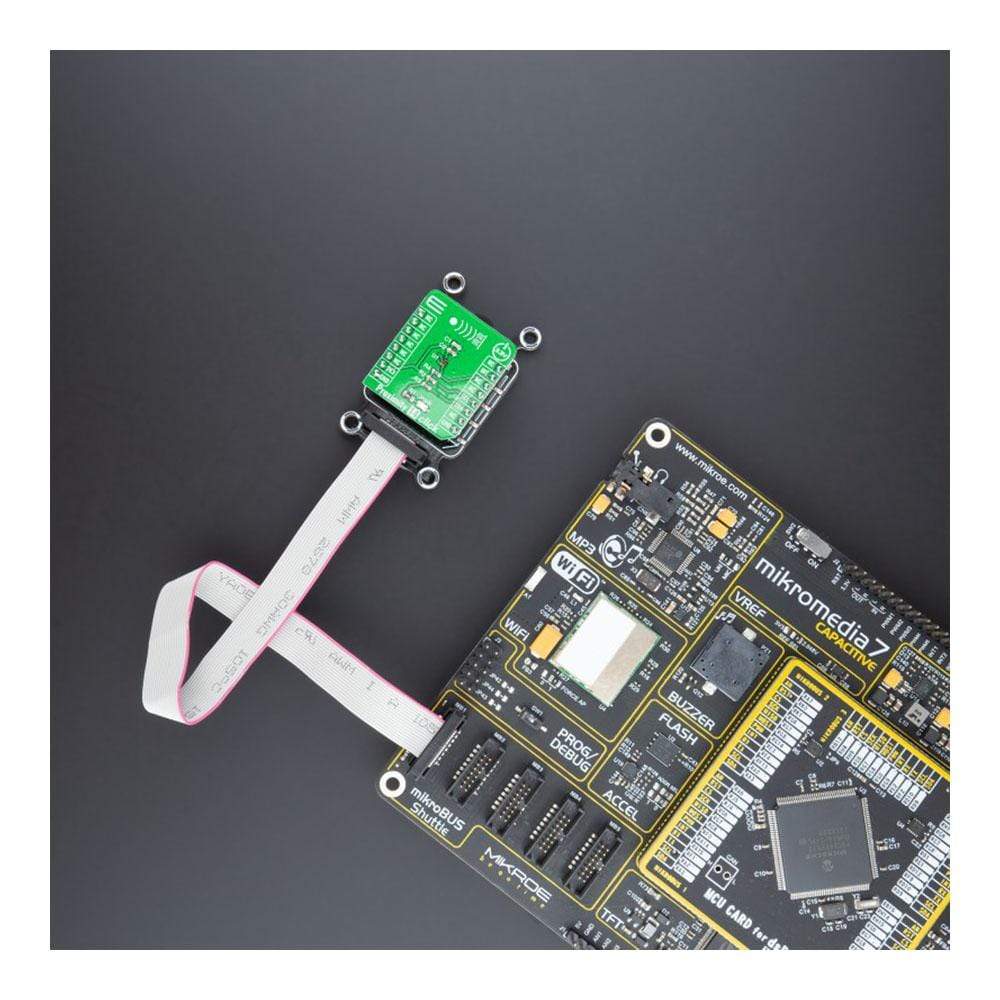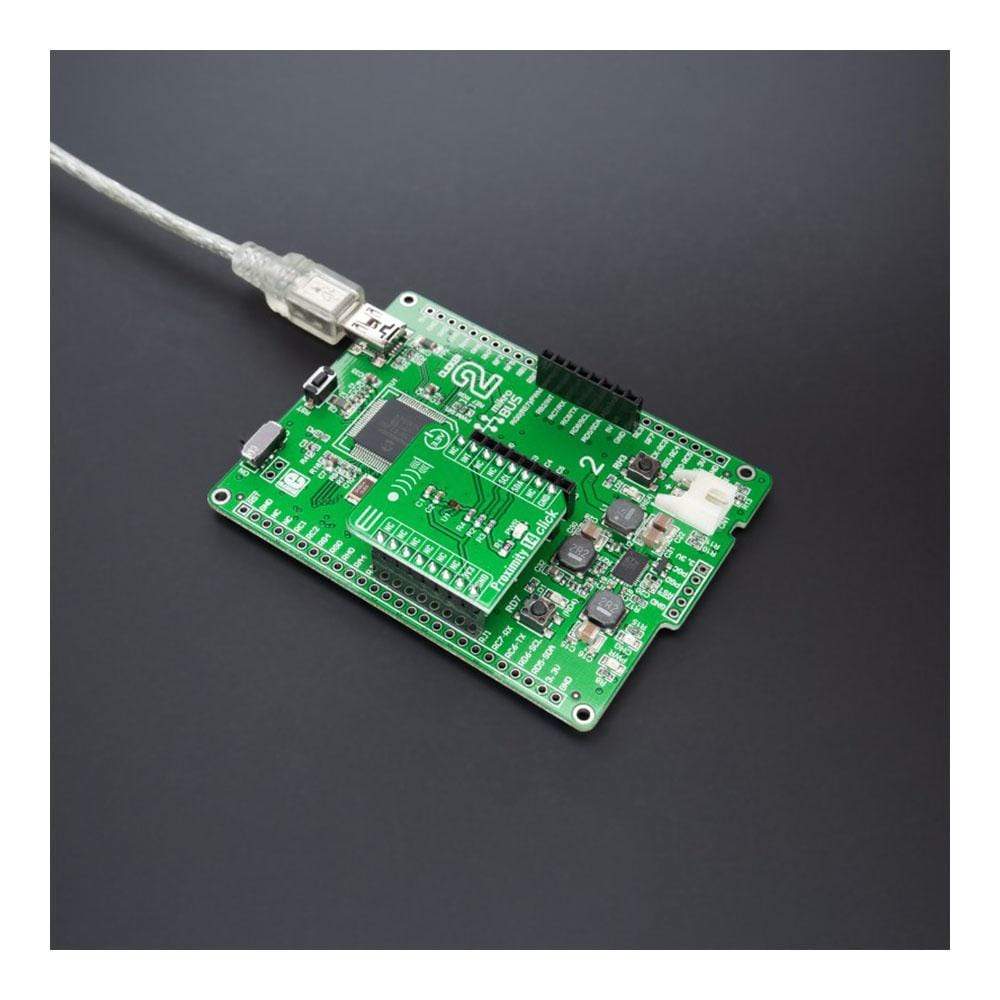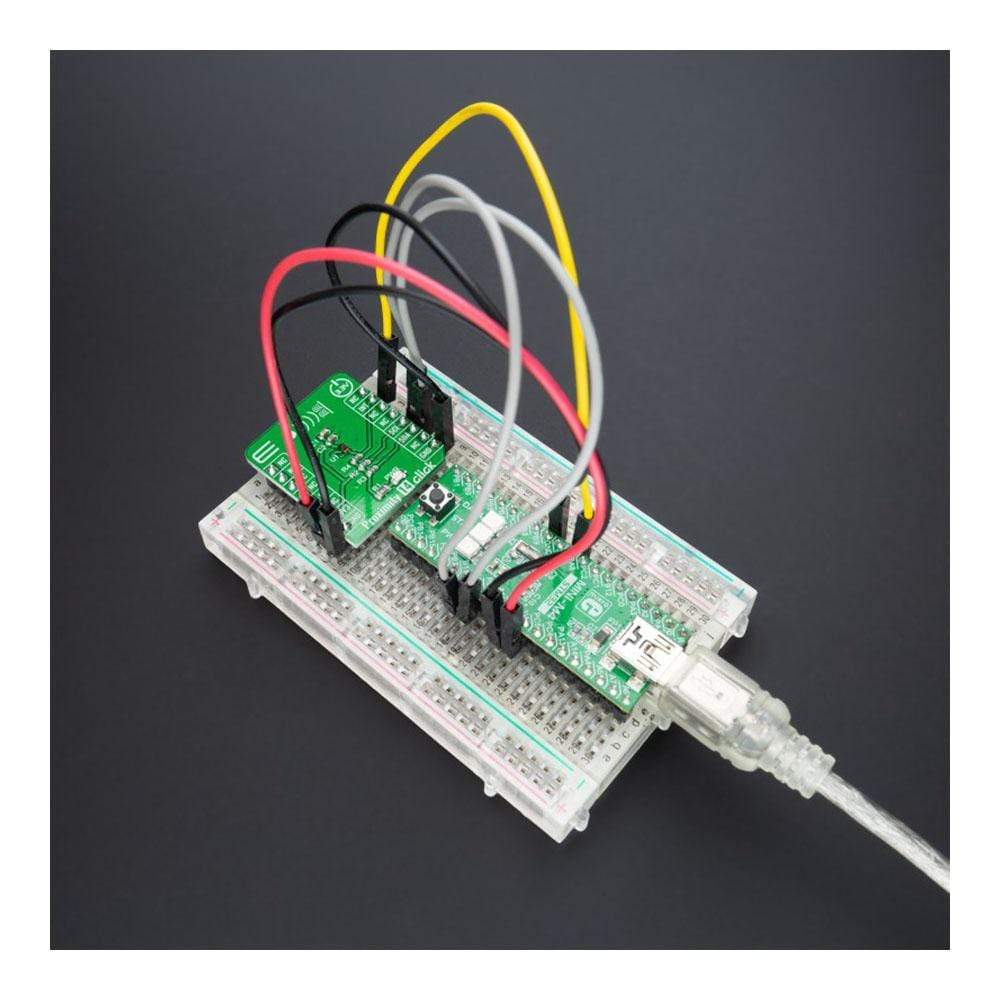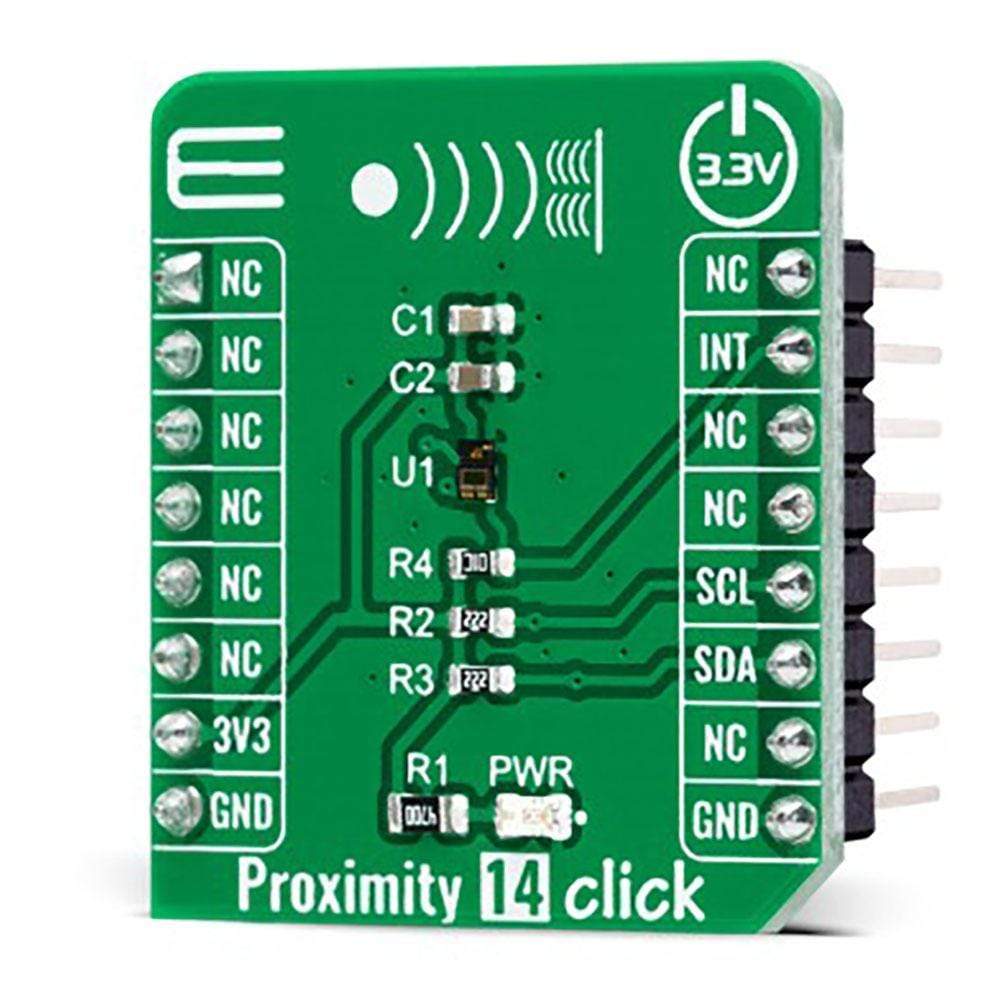
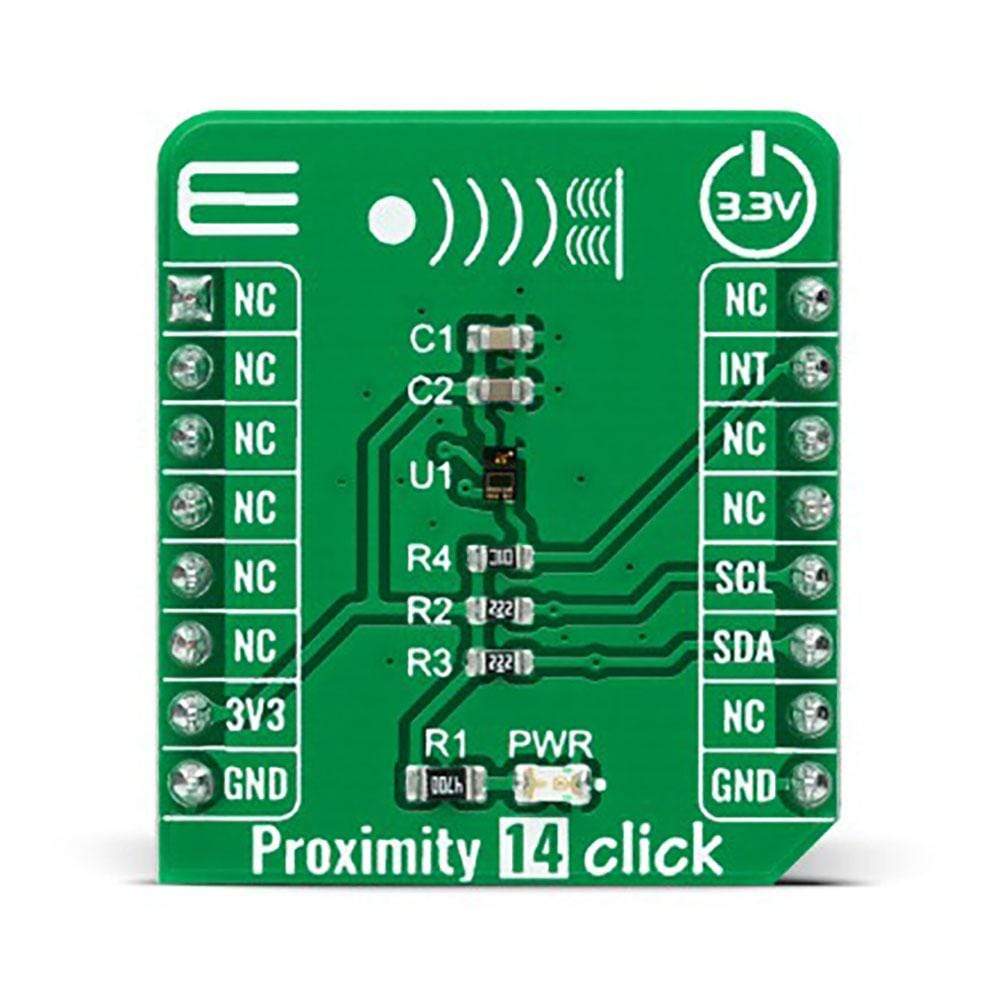
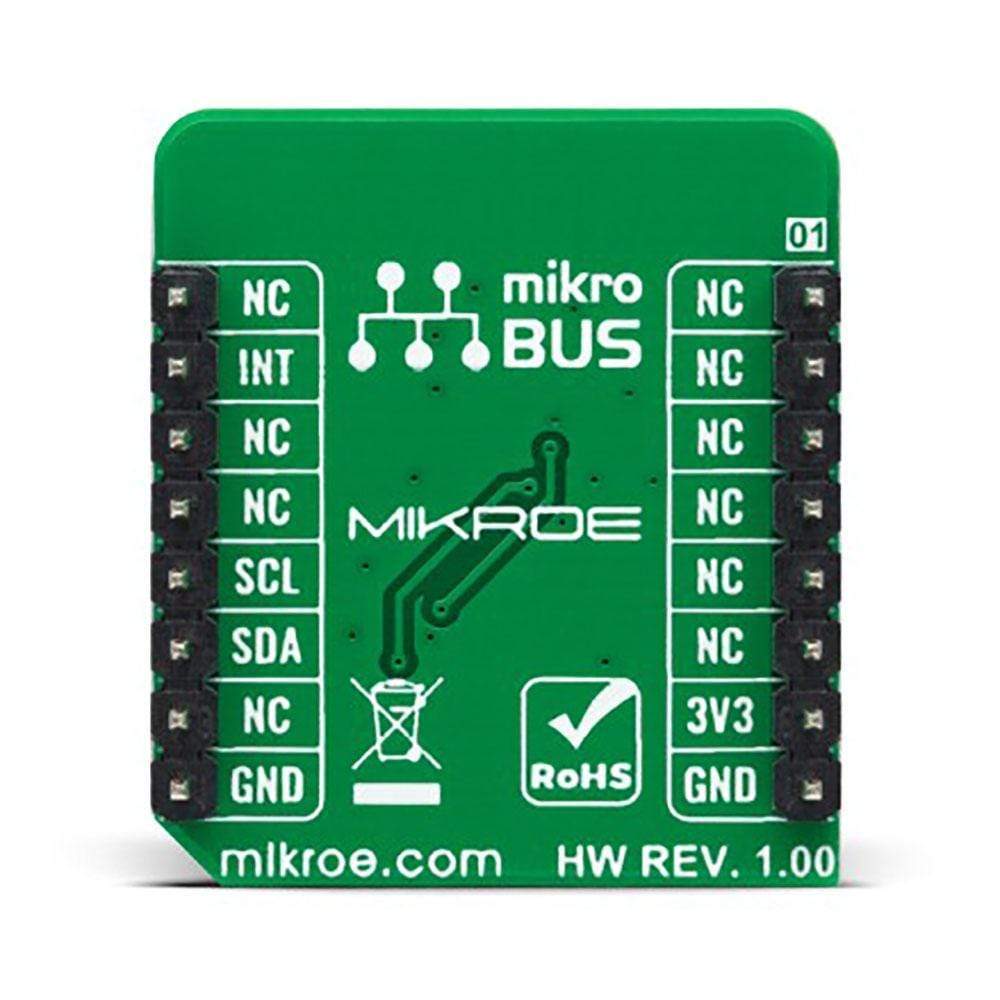
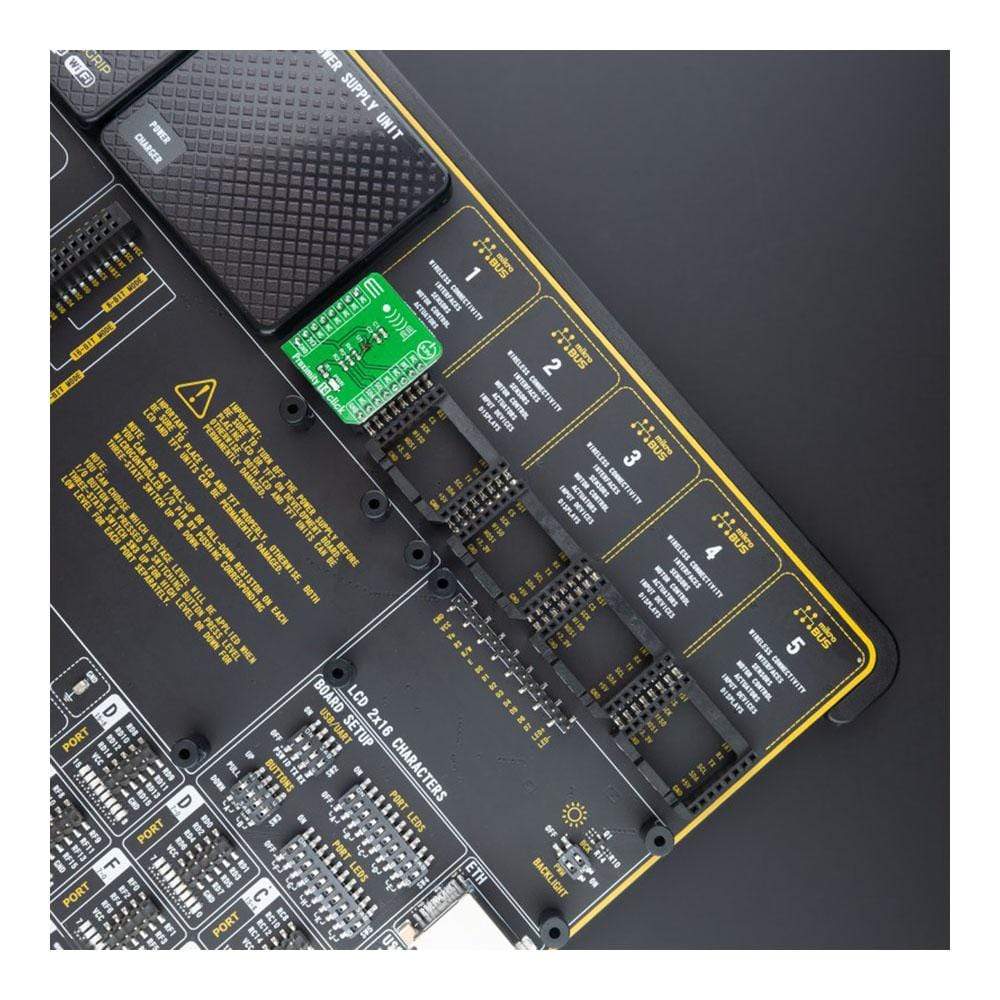
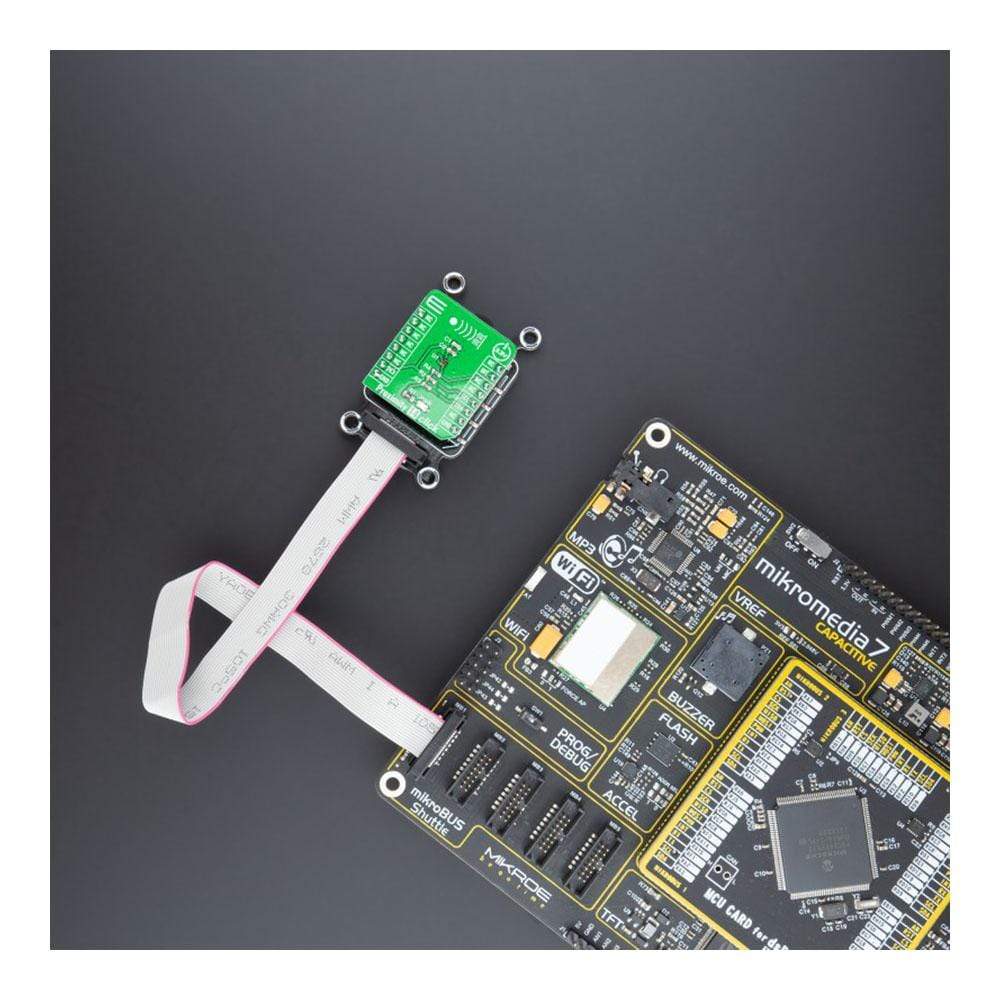
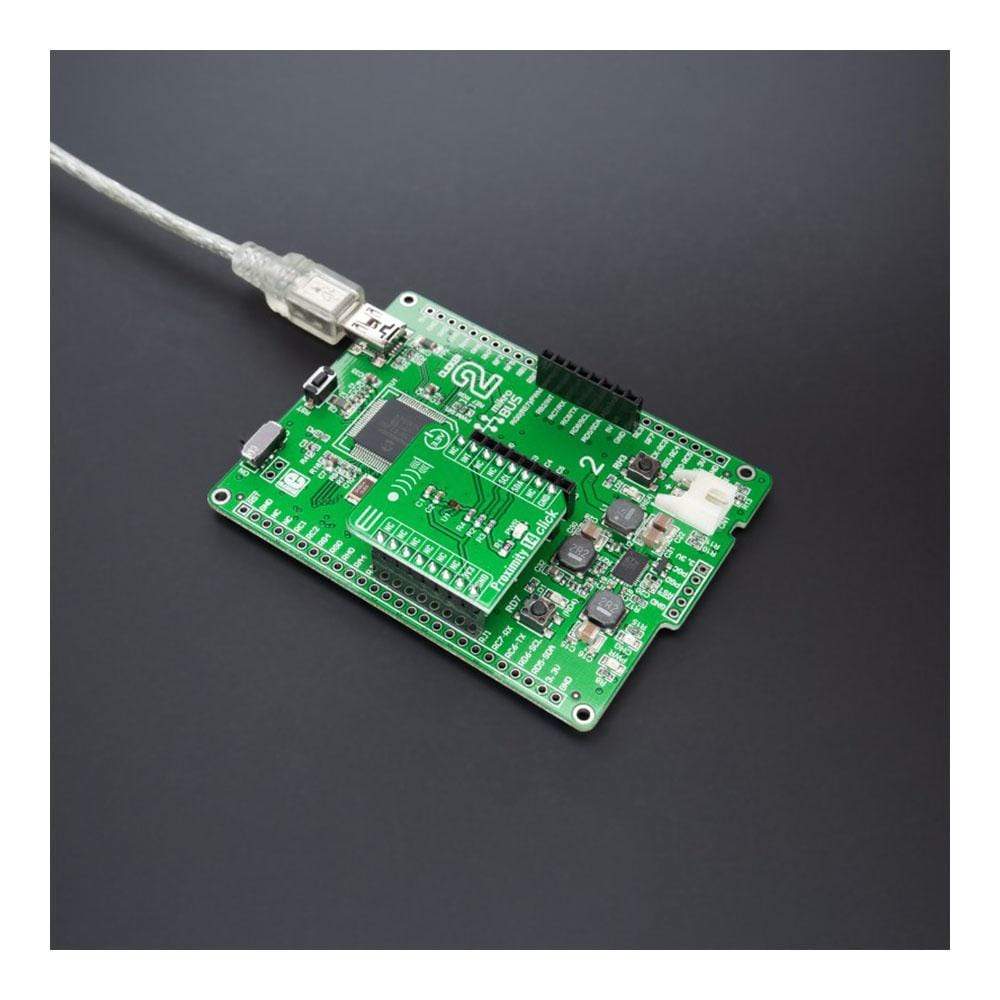
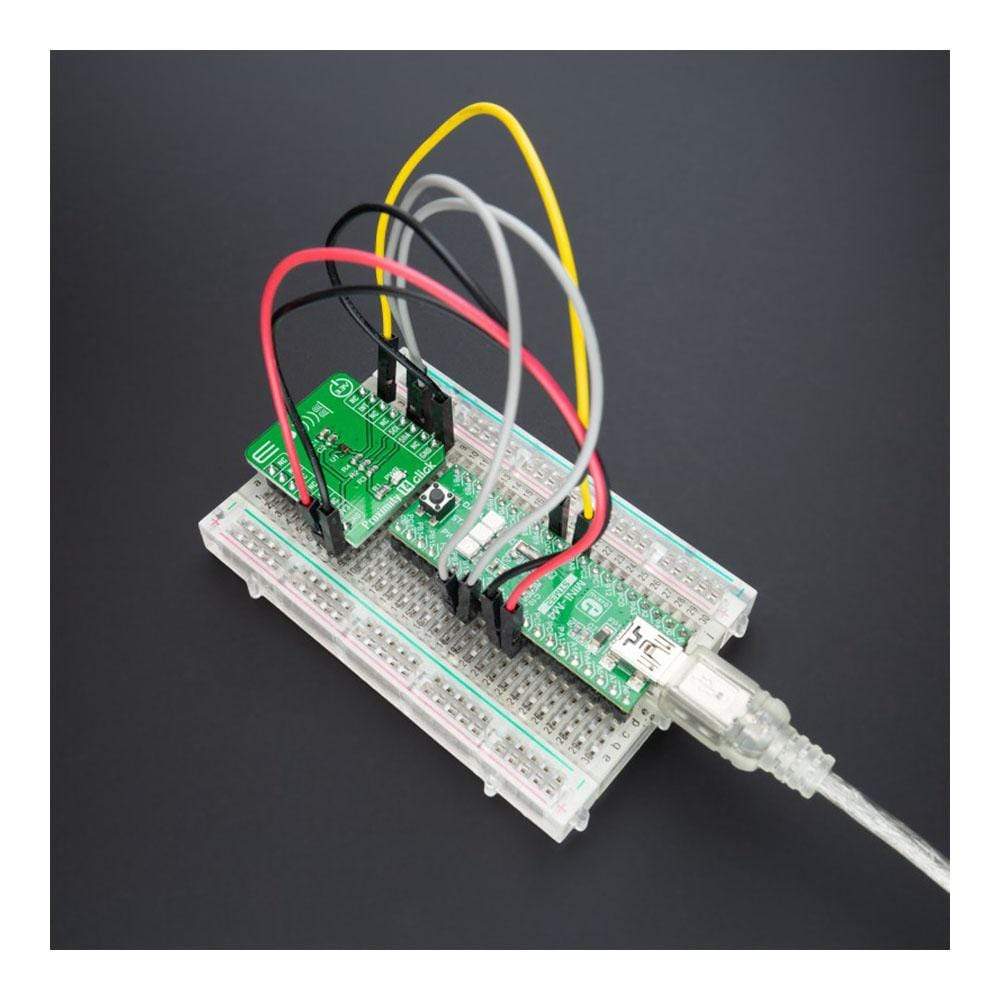
Overview
The Proximity 14 Click Board™ is a compact add-on board that contains a close-range proximity sensing solution. This board features the VCNL36825T, a fully integrated proximity sensor from Vishay Semiconductors. It combines a high-power VCSEL (vertical-cavity surface-emitting laser) and a photodiode for proximity measurement and signal processing IC in a single package with a 12-bit ADC. It provides proximity detection in applications with highly tight space requirements through its standard I2C bus serial digital interface and comes with a programmable interrupt function.
With a range of up to 20cm (7.9"), the VCNL36825T greatly simplifies its usage in consumer and industrial applications because no mechanical barriers are required to isolate the emitter from the detector optically.
Downloads
Der Näherungssensor 14 Click Board™ ist eine kompakte Zusatzplatine, die eine Lösung zur Näherungserkennung im Nahbereich enthält. Diese Platine verfügt über den VCNL36825T, einen vollständig integrierten Näherungssensor von Vishay Semiconductors. Sie kombiniert einen Hochleistungs-VCSEL (Vertical-Cavity Surface-Emitting Laser) und eine Fotodiode für Näherungsmessung und Signalverarbeitungs-IC in einem einzigen Gehäuse mit einem 12-Bit-ADC. Sie bietet Näherungserkennung in Anwendungen mit sehr geringem Platzbedarf über ihre standardmäßige serielle digitale I2C-Busschnittstelle und verfügt über eine programmierbare Interruptfunktion.
Mit einer Reichweite von bis zu 20 cm (7,9 Zoll) vereinfacht der VCNL36825T den Einsatz in Verbraucher- und Industrieanwendungen erheblich, da keine mechanischen Barrieren erforderlich sind, um den Sender optisch vom Detektor zu isolieren.
| General Information | |
|---|---|
Part Number (SKU) |
MIKROE-4744
|
Manufacturer |
|
| Physical and Mechanical | |
Weight |
0.02 kg
|
| Other | |
Country of Origin |
|
HS Code Customs Tariff code
|
|
EAN |
8606027383304
|
Warranty |
|
Frequently Asked Questions
Have a Question?
Be the first to ask a question about this.

